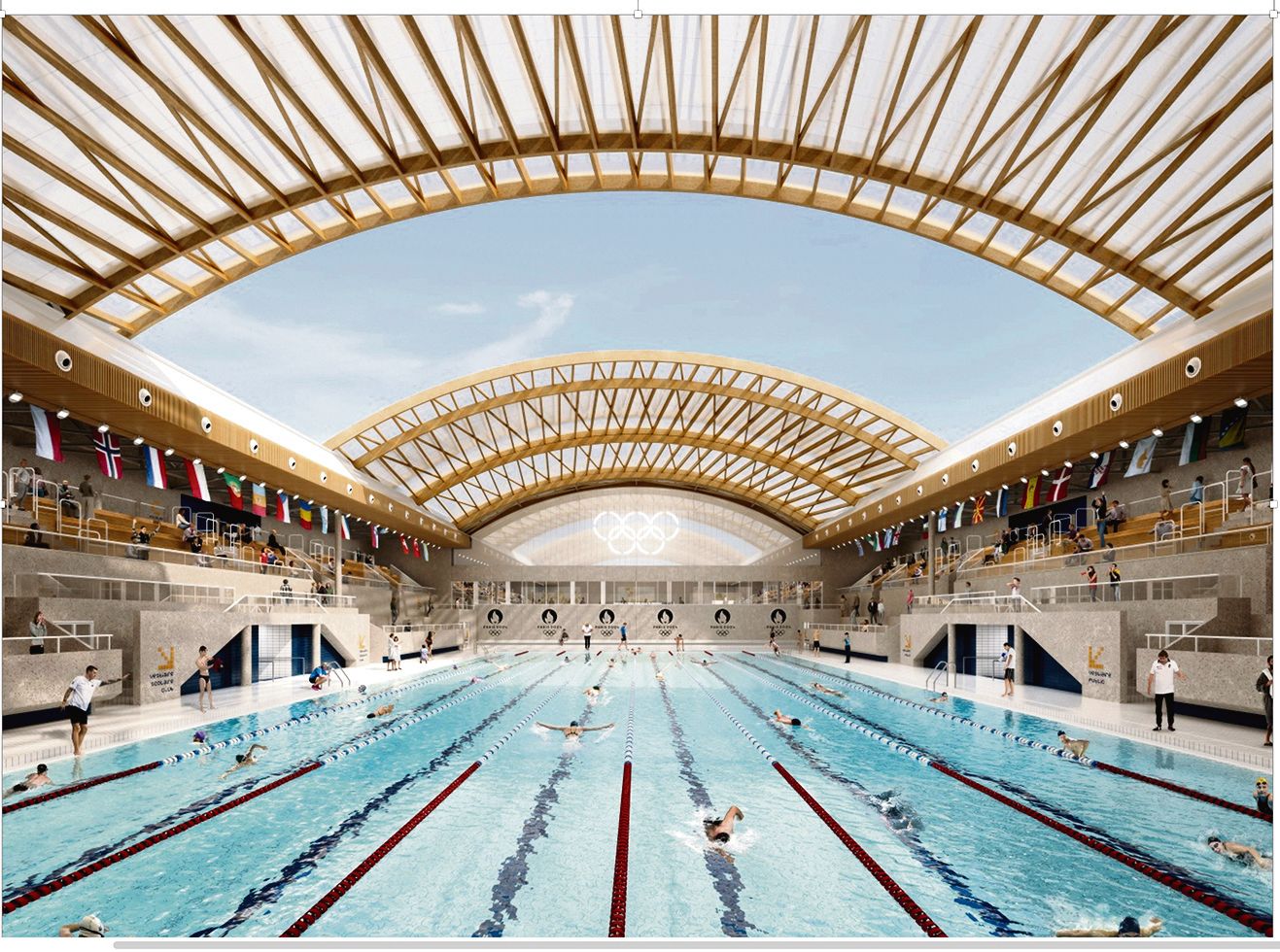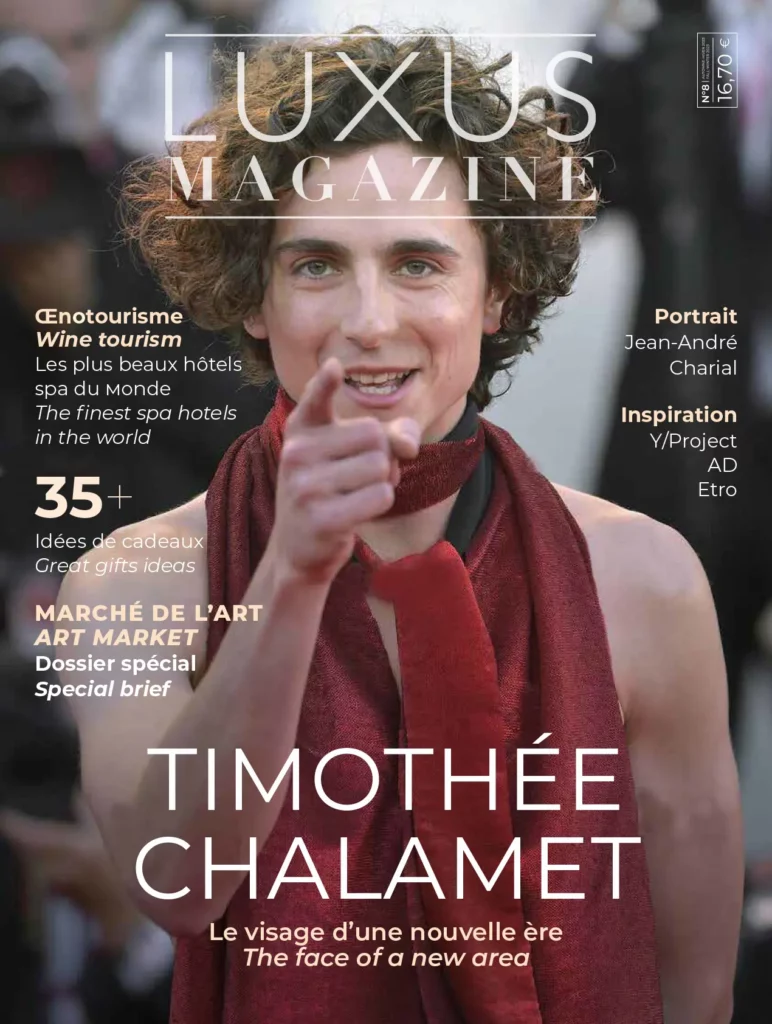Olympic Games 2024: the Georges-Vallerey pool (re)jumps into the deep end

Located in the 20th arrondissement, this pool was built in 1924 for the Paris Olympics. A century later, it is being renovated to welcome the athletes of the 2024 Olympics and to become a training site.
D-500 to go before the City of Light welcomes athletes from around the world for the 2024 Olympic Games. For the occasion, Paris is thinking big, and the capital is innovating and renovating. New buildings are coming out of the ground, while old buildings are being given a makeover. Like the Yves-du-Manoir stadium in Colombes, which hosted the 1938 World Cup final, the Georges Vallerey swimming pool is one of the sites that the city of Paris is recycling and renovating for the long-awaited Olympic Games.
Behind the building site structures and barriers, the establishment already displays the Olympic rings, symbols of these world-famous sporting events. And these colored rings, the Georges-Vallerey pool knows them well.
First Olympic pool
A century ago, the large pool of the George-Vallerey complex counted great exploits in its waters. Notably that of the American Johnny Weissmuller, three-time Olympic medalist, who later became Tarzan on the screen. In addition to these feats, it was avant-garde. It was, in France, the first Olympic pool with a 50-meter pool, which innovated by separating the pool into several lines, to create lanes.
A place full of nostalgia and victories, which unfortunately will not host new swimming events next year, due to a lack of seats in the stands. It will however be used as a training site before becoming an almost historical monument of the French capital.
A little rejuvenation
Inside, some 50 workers are working hard to complete the work in time for the beginning of next year. In addition to the floors, walls and everything in between of the building from the last century, the biggest part of the renovation concerns the swimming pool and especially the roof covering, which, since January, no longer exists!
This reconstruction was entrusted to the French architectural firm AIA architectes and led by Romain Viault, of the firm Architecte(s). A first construction site between 1986 and 1989 has already allowed the pool to change its cut, or rather its roof with a mechanism that allows to open and close it.
To go into a little more detail, the previous roof, which was made of larch wood will be replaced by Douglas, from forests in the Vosges and Jura. The new roof will be made of polycarbonate, a light and translucent plastic material with a high thermal resistance. This renovation, which will cost around 12 million euros, is financed in equal parts by the city of Paris and Solideo (the company responsible for delivering the Olympic facilities).
Eco-responsibility on the agenda
“Through this renovation project, there is also a very strong environmental and social ambition,” explains Flavie Anet, project manager for the operation within the steering and expertise division of the Paris City Council’s Youth and Sports Department.
A “green” and responsible renovation, since the city of Paris has decided to reuse the waste from the site such as iron, rubble or old installations to give them a second life.
For example, the wood from the old framework will be used to make furniture and signage, which will be placed in the renovated pool. The city of Paris has donated another part of the wood to the Extramuros association, a solidarity carpentry that reuses materials.
Other developments and solutions are currently underway, such as improving accessibility, particularly for the visually impaired, and air quality by renovating the ventilation system, as well as modernizing the lighting, which should reduce energy consumption by 40%.
The opening is scheduled for March 2024, for athletes who will have the chance to train in the footsteps, or rather in the “fathoms” of former medal winners. For Parisians, on the other hand, it will be necessary to wait until the end of the Olympic Games, i.e. around March 2025, to swim in the pool and enjoy the good weather and the sun on summer afternoons, thanks to the future new opening roof.
Read also >THE EVOLUTION OF THE MEDALS OF THE OLYMPIC GAMES
[EN] CLAIRE DOMERGUE, A SPECIALIST IN COMMUNICATION IN THE LUXURY SECTOR, HAS SURROUNDED HERSELF WITH EXPERTS TO CREATE THE FIRST MEDIA DEDICATED TO THE ECONOMIC NEWS OF LUXURY AND FASHION. THE LATTER DRAWS THE ATTENTION OF ITS READERS TO ALL THE MAJOR PLAYERS IN THESE SECTORS WHO SHARE THEIR EXPERIENCES, VISIONS AND KNOW-HOW. MORE THAN A SPECIALIZED WEBZINE, LUXUS PLUS IS A MULTI-SECTOR INFORMATION SYSTEM, WHICH HAS BECOME THE REFERENCE MONITORING TOOL FOR LUXURY AND FASHION PROFESSIONALS. OUR NEWSLETTERS CONTRIBUTE TO MAKE OUR READERS AWARE OF THE CHANGES AFFECTING THE LUXURY INDUSTRIES. THANKS TO AN INCREASED WATCH AND AN EXCELLENT KNOWLEDGE OF THE SECTOR, WE ARE INTERESTED IN THE MAIN ECONOMIC AND TECHNOLOGICAL STAKES OF FASHION, FINE WATCHMAKING, JEWELRY, GASTRONOMY, COSMETICS, PERFUMES, HOTELS, PRESTIGIOUS REAL ESTATE...********[FR] Claire Domergue, spécialiste de la communication dans le secteur du luxe, s’est entourée d’experts pour créer le premier média consacré à l’actualité économique du Luxe et de la mode. Ce dernier attire tout particulièrement l’attention de ses lecteurs sur l’ensemble des acteurs majeurs de ces secteurs qui y partagent leurs expériences, visions et savoir-faire. Plus qu’un webzine spécialisé, Luxus Plus est un système d’information multi-sectoriel, devenu l’outil de veille de référence pour les professionnels du luxe et de la mode. Nos newsletters de veille contribuent en effet à sensibiliser nos lecteurs aux mutations qui touchent les industries du luxe. Grâce à une veille accrue et à une excellente connaissance du secteur, nous nous intéressons aux principaux enjeux économiques et technologiques de la mode, la haute horlogerie, la joaillerie, la gastronomie, des cosmétiques, parfums, de l’hôtellerie, l’immobilier de prestige…





